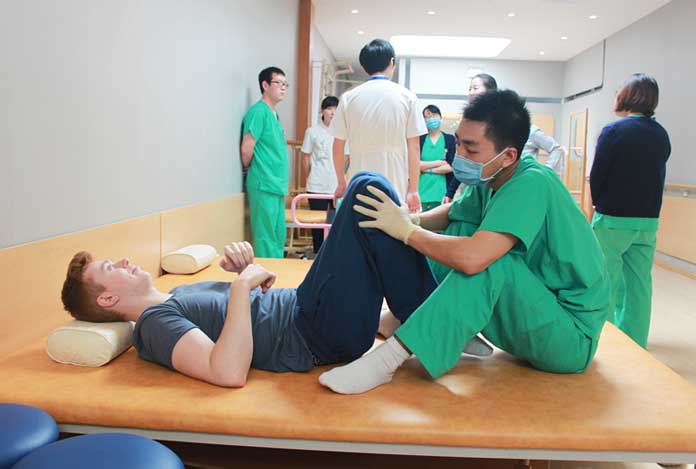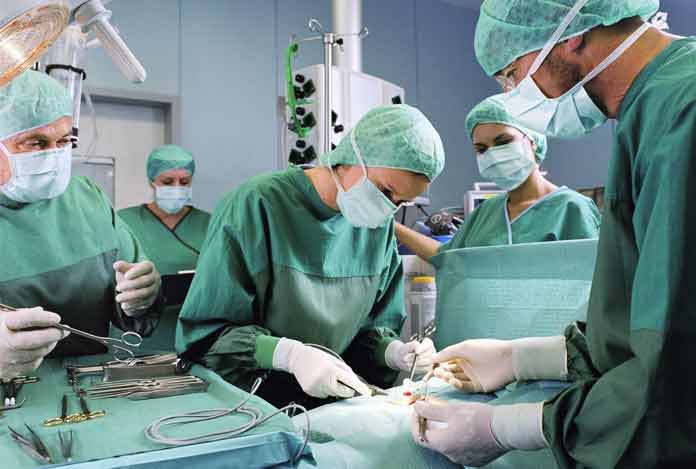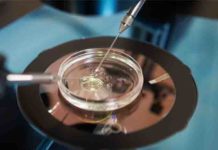
Male infertility implies inability of a male to get a fertile woman pregnant. It makes up for 40-50% of infertility cases. Globally, it affects 7% of all men. A man’s fertility depends on the quality and quantity of the sperm. If number of sperms ejaculated by a man are low or if the sperm is of poor quality, then it may sometimes be difficult for a man to cause pregnancy.
In most cases of male infertility, there are no signs and symptoms of infertility. Sexual intercourse, ejaculations and erections happen normally. The quantity and appearance of the ejaculated semen also appears all right to the person. Only medical tests can confirm whether the male is infertile or not.
Male infertility is caused by issues that affect either sperm production or sperm transportation. A whopping 66% of men have a problem with producing sperm in the testes. Either the number of sperms produced is not enough or the ones that are produced do not work properly.
Sperm transportation problems are found to be present in nearly 20% of infertile men. This includes men, who have undergone vasectomy, but now wish to have children. Blockages in the tube leading the sperm away from testes to the penis can cause no sperm in the ejaculated semen.[1]
Other causes include sexual issues that stops semen from entering the vagina of the woman for the fertilization to happen. Hormones not being produced in appropriate amounts in the pituitary glands, which act on the testes and sperm antibodies are other factors that reduce fertility.
Male Infertility Treatments
The major goal of male infertility treatment is to create pregnancy. If the cause of the infertility is reversed, then pregnancy can happen with natural sex.
1. Clinically Tested Treatments:
Some common clinically tested male infertility treatments are discussed below:
- Treatment of Hypothalamic or Pituitary Deficiency: In about 2-5% of the cases, male infertility occurs due to problems in hypothalamus and pituitary glands. For men with this type of infertility, treatment is done with human chorionic gonadotropin (HCG) in combination with a hormone, called recombinant human follicle-stimulating hormone (rhFSH). Treatment with HCG with or without rhFSH is known as gonadotropin treatment.
- Gonadotropin Treatment: It is initiated by giving injections of HCG three times a week for about 6 months. Blood tests monitor blood testosterone levels. If sperm cells are not seen in semen even after six months of the treatment, rhFSH injections may be given. Though expensive, it is quite effective as most men having infertility due to hypothalamic or pituitary reasons start to produce sperm in the ejaculate after going through this treatment, which lasts for around a year or two.
- Varicocele: It is the expansion or dilation of a vein in the scrotum. Most men with varicocele have a low sperm count or the shape of the sperm is abnormal. It can be treated surgically by cutting the veins connected to the varicocele. A varicocele that has been present for a long time can cause irreversible damage and cannot be treated by surgery. An option to varicocele repair is assisted reproductive technology (ART).
- Surgery for Treating Blockage of the Reproductive Tract: Men, who have a blockage in the ducts that transport sperms, can undergo surgery to fix the blockage. If surgically it is not possible to remove the blockage, assisted reproductive technology (ART) can be an option.
- Vasectomy Reversal: Vasectomy is an intended blockage to prevent future pregnancy. This is known as male sterilization. It can however be reversed in most cases. Half of the couples can attain pregnancy after getting vasectomy reversal. The greater the amount of time passed after vasectomy, the lesser the chances of restoring fertility.
- Sperm Retrieval Techniques: Sperm can be obtained from men at any point of time. Sperm retrieval procedures are performed at an outpatient surgery center, which lasts for up to an hour. A needle is used to penetrate the scrotal skin and draw a small amount of sperm from the epididymis.
- In Vitro Fertilization: It is commonly used to treat a variety of infertility problems like unexplained infertility. IVF is given with intracytoplasmic sperm injection (ICSI) for men having infertility.
- Intracytoplasmic Sperm Injection: In ICSI, sperm from the male is directly injected in the egg of the woman in the lab.
- Percoll Treatment: Men with reduced sperm count, but are able to produce sperms that are motile can be enriched with good sperms. This is done by passing collected sperm through a filtering medium for concentrating the best ones. A very widely used fluid is percoll. Post filtration, good sperm is introduced in culture fluid. Sperm is concentrated around the egg, so there are greater chances of fertilization.
- Gene Therapy: Scientists have been testing gene therapy for the treatment of infertility. In this therapy, DNA is injected in the tissues to replace defective genes. Several animal studies, performed on male mice carrying a genetic defect, responsible for blocking sperm production, have proved that gene therapy on testicular tissue can restore fertility. However, gene therapy for infertility treatment is still under research, but have promising future prospects.

2. Non-Surgical/Medication Therapy
- Spinal Cord Injury Treatments: Men with spinal cord injury may be infertile. There are many methods to collect sperm combined with various forms of ART. Sperm can be obtained via vibratory stimulation to the head and penis shaft. Other therapies that can be used are rectal probe and electroejaculation.
- Electroejaculation Therapy (EEJ): This therapy is successful in men, who are able to produce normal levels of sperm, but cannot ejaculate because of a short circuit in the nervous system. EEJ was initially used in patients with spinal cord injury. However, it has been found effective in cases of ejaculation loss due to other conditions as well like diabetes, pelvic surgery and multiple sclerosis. EEJ is known to retrieve sperm in more than 90% of the cases.
- Clomiphene Citrate: Men with milder forms of sperm abnormalities can be treated with clomiphene citrate tablets to improve the quality of semen. Research has established that these tablets can increase the sperm count and improve motility of sperm.

So far, we have discussed various surgical and non-surgical treatment methods to deal with male infertility. It is observed that the underlying cause in most cases of male infertility is either defect in the production of the sperm or reduced motility of the same.
However, there is one more condition that might lead to male infertility, i.e., erectile dysfunction (ED). It is characterized by a person’s inability to get or maintain penis erection during sexual intercourse. This is generally a temporary condition and can be cured. The
Treatment for ED can be divided into four categories —
Pharmacological, Mechanical, Surgical and Psychological.
- Pharmacological Treatment: It comprises delivery of medications that help restore erection. Viagra is taken orally for increasing penile blood flow. It is very effective. Alprostadil is another drug which is injected in the penis to cause erection. Papaverine, an antispasmodic drug, is occasionally used to treat ED. Testosterone replacement therapy is effective in case of low testosterone levels.
- Mechanical Treatment: It makes use of a vacuum erection device with a constriction ring. It is an effective treatment, but quite complicated.
- Surgical Treatment: It makes use of implants to restore erectile capacity. A semi-rigid implant keeps the penis in a semi-rigid state. Arterial and venous reconstructive surgery works well to make a
man achieve erection. - Psychological Treatment: Psychological interventions relieve the symptoms of stress, depression and anxiety in infertile men. The most prevalent treatment is counseling and marriage therapy. The main goal of psychological treatment is to help a man acknowledge infertility and seek possible solutions for the issue.











